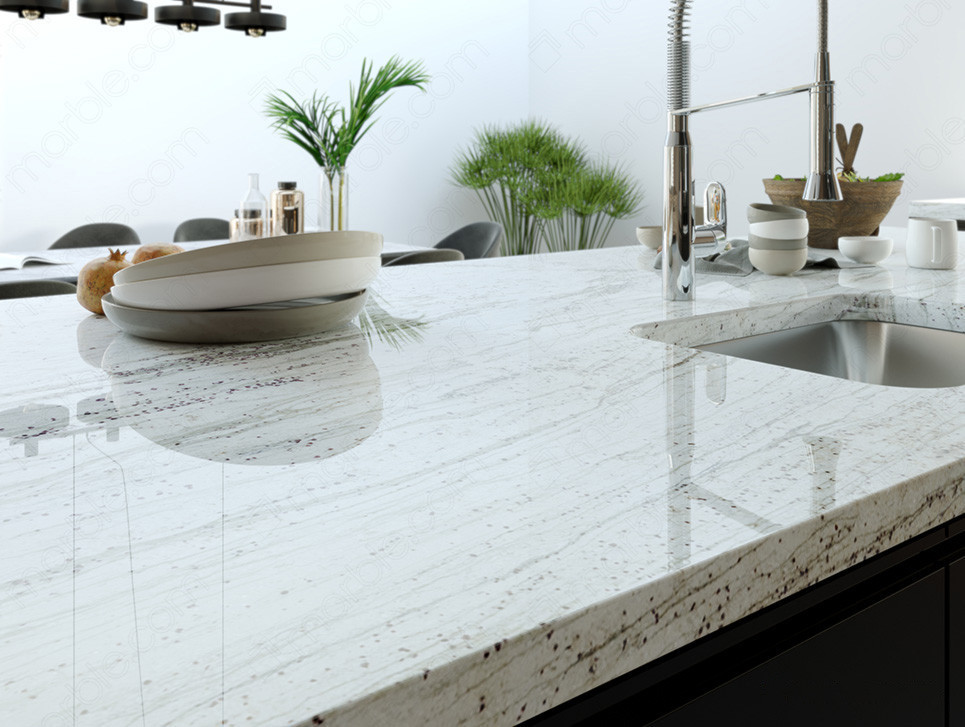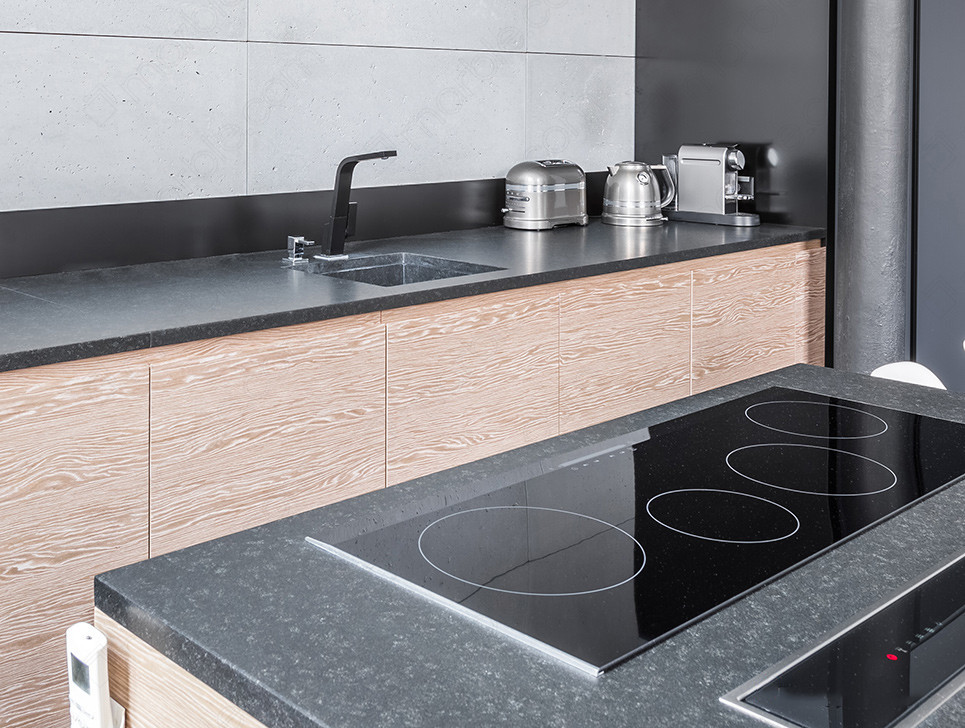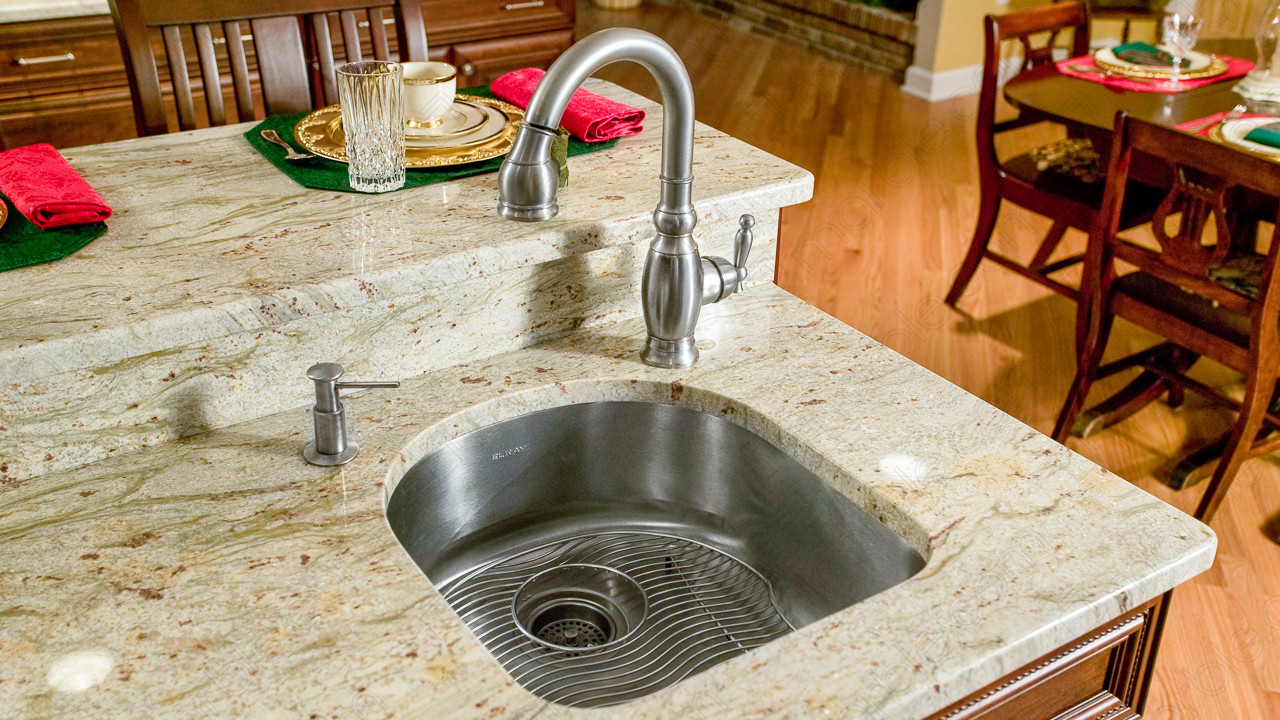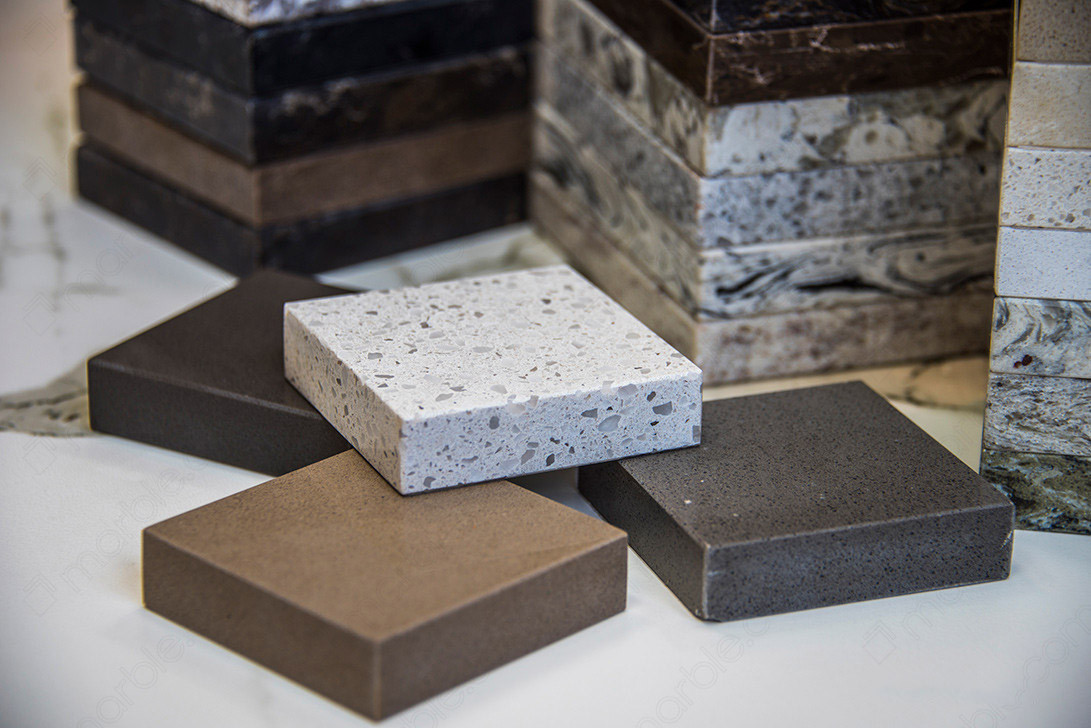Table of Contents
Granite is a beautiful and durable stone that is often used in homes. It is a well-loved material due to resistance to multiple types of damage, including heat, scratch, and stain. Even though it is a naturally occurring stone, there are no shortage of colors and patterns available for purchase, with over 600 on Marble.com. Granite is typically used on kitchen countertops, vanity tops, fireplace surrounds, and even outdoor decor.
As such a popular stone, many wonder how they have encountered the material in multiple different textures. The answer is simple: granite can be customized to different finishes. These finishes can help to bring more character to your countertops. For example, a more shiny, high-gloss finish can make the countertop feel more luxurious, while a stone with visible texture can make the countertop feel more natural.
[get_quote]
The most popular finishes available for granite countertops include the following: honed, polished and leathered. There are also a number of textures that a granite can be finished in that are typically used for other areas in the home, such as fireplace or pool surrounds.
Polished

Polished granite is granite that has been polished to perfection, leaving a beautiful high-gloss, reflective surface. It is the most common granite countertop finish, and it is what is traditionally thought of when someone is installing a granite countertop. This finish helps to highlight the beautiful patterns, colors and general depth of each granite slab. This stone has mirror-like qualities which can make a room feel more luxurious.
With a polished finish, granites with more intricate designs will be enhanced and the veins, flecks and swirls which make each slab unique will become much more noticeable. This finish is inherently high-end and is easily seen as the height of luxury. The stone’s fantastic appearance is created when the surface is polished with specialized, fine grain polishing pads.
Polished granite is usually on the lower end of the spectrum in terms of price as most granite stones are ready made in a polished version.
Standard granite care instructions are required for polished finished stone. To clean, just use soapy water, and avoid abrasive cleaners like bleach or ammonia. The surface should also be resealed every six months to a year. Homeowners can tell if the surface requires resealing by performing the water test: simply place a small amount of water on the surface and see if it is absorbed. If it is, then resealing is required. This process is remarkably easy and can be done by homeowners rather than requiring a professional.
Polished stone removes, or at the very least distracts from, many visual imperfections in a stone. A polished stone can help to highlight the beautiful blend and mixture of different colors and patterns in a stone. If you are purchasing a stone with more intricate patterning, we recommend a polished finish to really bring it to life. The glossy, reflective surface of a polished stone can make a room feel more luxurious.
Honed

Honed granite is a granite that has undergone only part of the polishing process. This stone has more of a matte appearance, and will not be shiny. This is highly desirable by homeowners looking to have a more natural appearance on their countertops.
Many believe the appearance of overly shiny granite can be too loud and obvious in otherwise subdued rooms. This finish is beautiful and subtle in the best ways as it can blend in with the rest of your decor and harmonize multiple design elements.
In terms of cost, honed granite tends to be slightly more expensive than polished granite. The finish is less commonly used than polished granite, thus less likely to be already made.
Honed granites will also require more maintenance than polished granite. Even with proper sealing, the finish tends to be more prone to staining. Because of this, it will need to be resealed more often. Honed granite tends to be more susceptible to scratching and chipping. Darker colored honed granite may require more cleaning.
There are many ways to style honed granite that will highlight the unique texture. Black or dark grey granite can add contrast to any space, but with a honed finish it can be more natural. This style of granite countertop can help bridge the gap between industrial styling and farmhouse styling.
Leathered

Leathered granite has a more textured appearance. This style of stone has a raised texture that is similar to that of leather, hence the name. This stone finish has been rising in popularity in the last few years as it is an ideal choice for those looking to add a rustic touch to their home. This finish is preferred for more simple and plain slabs as intricate designs may become hidden with the stone’s ridging.
This unique stone finish gets its appearance in an equally unique way: a diamond tipped brush is run over the surface of the stone. This helps to get rid of imperfections, polish the stone as well as create more interesting textures. The exact kind of leather depends on the slab, but regardless of the stone you choose, it will surely make an impact in your home. We recommend using a hand broom to remove physical particles stuck in the grooves before moving on to the traditional soapy water method.
The maintenance of the stone is actually less frequent than polished or honed stones. The texture of the leather can actually hide staining, and generally, leathered granite requires less resealing sessions than polished or honed granite.
This unique texture is unlike any other. Unlike polished or honed finishes which can be added to most granite slabs, leather granite is created at the quarry and thus only specific slabs of granite can be purchased with a leathered finish.
One downside of leathered granite that you should be aware of is that, unlike other granite finishes, it can be more prone to scratching in comparison to other finishes. With proper levels of caution, this can be avoided, however, it is still something you should be aware of.
There are many ways to style leathered granite. This unique stone can add a rustic quality to a space. For example, a brown stone with multiple veins of different neutral colors as a leathered countertop would almost mirror the appearance of wood, but without the care required of a wooden surface.
[get_quote]
Non Countertop Finishes
There are a few other granite finishes, however, these finishes are typically not used for countertops or other similar surfaces. These finishes include sandblasted, tumbled, flamed, bush hammered and sawn.
No matter which granite finish you choose for your countertop, you can expect a high-quality, durable surface that will last a lifetime with proper care. Granite is one of the best materials available for countertop surfaces as it is beautiful and resilient.
















 The article helped me immensely
The article helped me immensely
 I’m now more informed on the subject
I’m now more informed on the subject
 I have questions about Marble.com
I have questions about Marble.com
 The article was not accurate at all
The article was not accurate at all
 There is a serious lack of information
There is a serious lack of information
 I have questions about Marble.com
I have questions about Marble.com